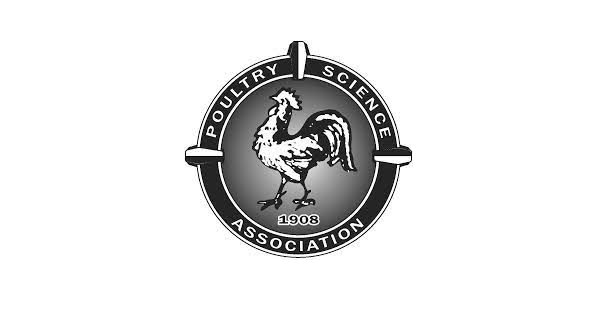Hurricane Helene has caused widespread devastation in the southern United States, severely impacting agriculture by halting chicken processing plants, destroying crops, and toppling pecan trees. Flooding and strong winds from the storm have disrupted the region’s agricultural operations.
Wayne-Sanderson Farms announced on Instagram that its processing plant in Moultrie, Georgia, would remain closed on Monday. Meanwhile, Pilgrim’s Pride Corp., owned by JBS SA, suspended production at two of its facilities on Saturday due to widespread power outages, according to a statement issued to Bloomberg.
Helene made landfall in Florida as a powerful Category 4 hurricane, bringing 140-mile-per-hour winds as it pushed inland. The storm flattened cotton fields and uprooted pecan trees in Georgia, in addition to leaving millions without power and taking more than 80 lives. States hit hardest by the storm included Georgia, North Carolina, and South Carolina.
Georgia Agriculture Commissioner Tyler Harper reported “significant damage to agriculture in all commodities” during a press conference, highlighting the destruction to poultry farms, timber, and pecan trees. Many food processing and dairy facilities remain without power.
The damage caused by Hurricane Helene may further strain the nation’s poultry production, especially as demand continues to rise. Georgia and North Carolina are among the top chicken-producing states in the US.
Georgia Governor Brian Kemp, speaking at a press conference on Saturday, stated that 107 poultry facilities in the state had been either severely damaged or completely destroyed. He emphasized that “every commodity in the state has been affected” by the storm.
JBS spokeswoman Nikki Richardson acknowledged the severe losses, adding that the company was still assessing the full extent of the damage to poultry farms. “We know many birds have been lost in some areas and the damage to farms is significant,” she said.
The cotton industry has also suffered, with many growers reporting losses ranging from 35% to complete crop destruction, according to a Facebook post from the Georgia Cotton Commission. The post added that the impact of Helene will be felt for years, as cotton gins, agribusinesses, and rural communities struggle to recover from the storm’s aftermath.

















Free-Range Chickens, Good Idea or Not?
What, exactly, are free-range chickens? According to USDA, free-range chickens must be “allowed access to the outside.” That doesn’t mean they actually have to go outside. They just have to have outdoor access.
On the other hand, to many rural chicken keepers, free range means letting the chickens go wherever they wish. That’s a non-starter for various reasons, including potential for predation and the possibility of annoying the neighbors.
The most practical definition of free range is allowing chickens into a fenced area that’s large enough to maintain forage. In other words, an area larger than the average packed-dirt chicken yard.
Free-Range Disadvantages
One disadvantage to free ranging is that chickens seem to always find a way to fly over or duck under the fence. They therefore wander into places where they aren’t welcome, like the garden or back porch. A tall wire mesh fence that’s tight on the bottom helps keep them in. An electric fence is also helpful. Some breeds are more adventuresome than others, so breed selection also comes into play here.
Despite a secure fence, predators can be a problem. Even when predators can’t get through the fence, or dig under it, some can fly over it. Hawks are the major culprits, here. Chickens that are close to the coop can duck inside in the face of danger. For chickens that tend to forage away from the coop, some shrubs or a small range shelter would give them cover to duck under.
Another disadvantage is that some hens will lay their eggs in the grass or under shrubs, instead of in nests provided inside the coop. Where that’s a problem, simply keep the chickens inside the coop until late in the morning, after most of them have finished laying.
Supervised Free Range
Chicken keepers who are risk averse may opt for supervised free-range time. That means letting the chickens out of confinement only when someone is around to keep an eye on them.
That doesn’t mean they’ll be entirely safe, though. A hawk can swoop down and grab a chicken faster than you can react. And you may be astonished to learn how many people have lost chickens to their own dog. Still, supervised free range is an option for chicken keepers who spend a lot of time out in the yard.
Free-Range Advantages
Despite the few disadvantages, free ranging offers several important advantages. For starters, the chickens will be healthier. That’s partly because they’re getting lots of exercise and fresh air.
Also they are not confined to a limited area where their droppings, parasites, and potential diseases concentrate. And they are enjoying greater variety in their diet, including an assortment of seeds, tender greens, and quality protein in the form of insects.
Speaking of insects, free-range chickens help control the insect pest population. They relish ticks and anything else that hops, flies, or crawls across their path. Plus chickens that keep busy foraging are much less likely to get bored and engage in bad habits like bullying each other, or picking at themselves and other chickens.
Exclusive of housing, feed accounts for some 70% of the cost of keeping chickens. Letting the flock obtain some of their nutrients by foraging will save you a bit of money on the cost of feed.
Exactly what percentage you might save depends on the size of your flock, the quality of the forage, and the time of year. In seasons when forage is less abundant, you’ll save less, but the chickens will still enjoy all of the other benefits of free range.
Source: Cackle Hatchery